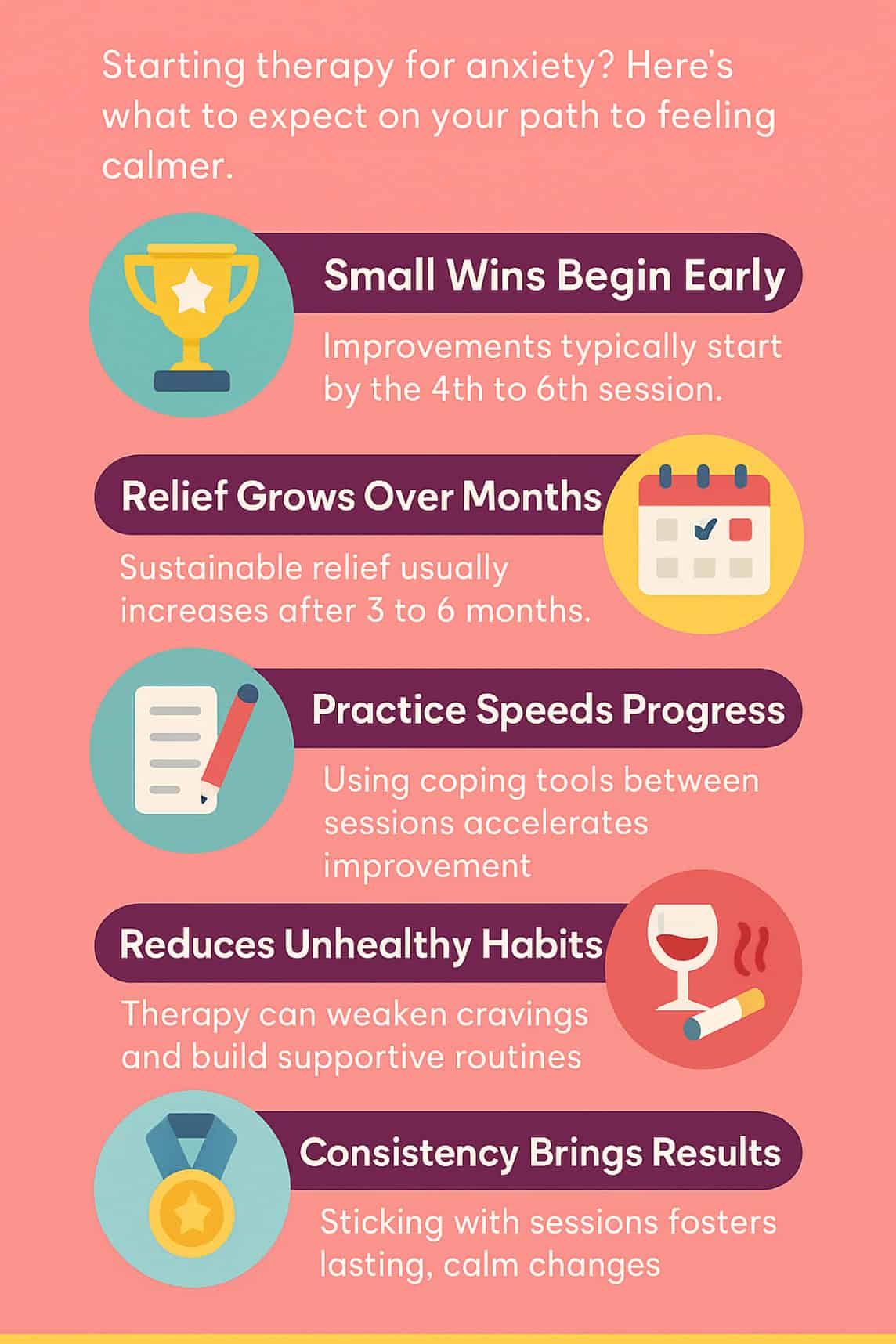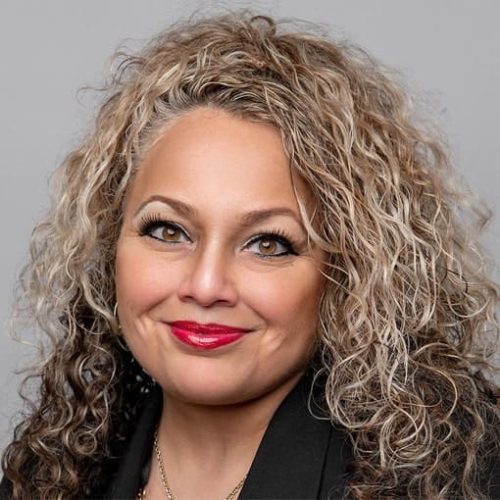
Key Takeaways for Starting Anxiety Therapy.
- Initial improvements often begin by the 4th to 6th therapy session.
- Sustainable relief typically builds over 3 to 6 months of regular therapy.
- Practising coping tools outside sessions speeds up progress.
- Therapy can help reduce cravings and replace unhealthy habits with more supportive routines.
- Staying consistent and patient leads to better long-term outcomes.
🎯 Actively practise skills between sessions and avoid relying on substances to cope.
👉 Ready to take the next step? Learn more about anxiety therapy at AERCS and how to book your free 15-minute phone consultation.

When you are starting anxiety therapy, most people begin to feel at least a small lift in mood and confidence after four to six weekly sessions, while deeper, more lasting relief typically unfolds over three to six months of steady work and regular skill practice. Knowing this timeline up front helps you stay patient, focused, and less tempted to fall back on quick fixes like alcohol or vaping.
Why Early Wins Matter.
The Four-to-Six-Session Window.
- Your therapist first gathers background information, teaches basic coping skills, and sets goals.
- By week six, you have usually practised breathing, thought-challenging, or mindfulness in real life.
- Research from Canadian clinics shows that nearly 50% of clients report noticeable improvement by session six.
Celebrate Small Gains.
- Fewer restless nights
- Shorter panic spikes
- Greater willingness to attend social events
These early shifts keep motivation high and reduce the risk of self-medicating.
What Sustained Progress Looks Like.
| Months in Therapy | Typical Changes | How It Feels |
|---|---|---|
| 1–2 | Skills click, triggers identified | “I can catch anxiety earlier.” |
| 3–4 | Thoughts and body cues settle | “I bounce back faster after stress.” |
| 5–6 | Habits shift, confidence rises | “I handle challenges without cravings.” |
Why Consistency Wins.
Each session builds on the last, so cancelling or spacing visits too far apart may slow momentum. Regular attendance also lets your therapist fine-tune techniques before old patterns return.
Accelerating Results with Daily Practice.
- Micro-Breathing Drills:
Spend one minute before meetings inhaling for four counts and exhaling for six. - Thought Logs on Your Phone:
Record anxious predictions, then update outcomes to prove fears wrong. - Healthy Substitutions:
Swap an after-work drink for a ten-minute walk, pairing exercise with a grounding technique.
Clients who practise at least 10 minutes per day often reach their six-month goals in four.
How Lifestyle Choices Speed or Stall Progress.
Boosters:
- Seven to eight hours of sleep support emotional regulation.
- Regular aerobic exercise lowers baseline anxiety by up to 20% in community studies.
- Balanced nutrition and steady hydration stabilise energy, making skills easier to apply.
Roadblocks:
- High caffeine or sugar intake
- Irregular session attendance
- Continued use of substances to “take the edge off”
Addressing these factors alongside therapy shortens the road to relief.
Setting Realistic Expectations.
“Recovery is a marathon, not a sprint, but every kilometre counts.”
- Expect ups and downs. Feeling worse for a day or two after a tough session is normal.
- Track progress weekly. A simple 0-10 anxiety scale shows trends you might miss otherwise.
- Communicate openly. If you do not notice change by week six, tell your therapist so they can adjust the plan.
Patience Pays Off.
When you are starting anxiety therapy, plan for four to six sessions to notice the first rays of relief, and commit to three to six months of consistent work for lasting calm. Daily practice, healthy habits, and honest feedback will help you cross the finish line faster than you think.
Ready to begin? Visit our Anxiety Therapy page and book your free 15-minute phone consultation. Let’s map out your timeline together.
How quickly will I notice changes after starting anxiety therapy?
Many people feel small improvements within four to six sessions.
Why does starting anxiety therapy take three to six months for lasting results?
It takes time to rewire thoughts, body cues, and habits for sustained change.
Can lifestyle choices speed up progress when starting anxiety therapy?
Yes, good sleep, exercise, and daily skill practice shorten recovery time.
What if I do not feel better after six sessions of starting anxiety therapy?
Share this with your therapist so they can adjust techniques or session frequency.
Does practising skills daily really matter once I am starting anxiety therapy?
Absolutely, daily practice reinforces learning and often halves the time to major relief.
Do You Need Anxiety Therapy?
Take this quick self-assessment to see if anxiety therapy could help you manage symptoms.Note: This questionnaire is educational only and does not replace a clinical assessment. If you wish to obtain professional guidance, please follow up with a licensed mental health professional.

